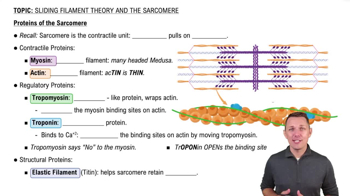Multiple Choice
Which protein contributes to the structural integrity of the sarcomere?
1788
views
53
rank
 Verified step by step guidance
Verified step by step guidance Verified video answer for a similar problem:
Verified video answer for a similar problem:



 6:26m
6:26mMaster Sliding Filament Theory with a bite sized video explanation from Bruce Bryan
Start learning